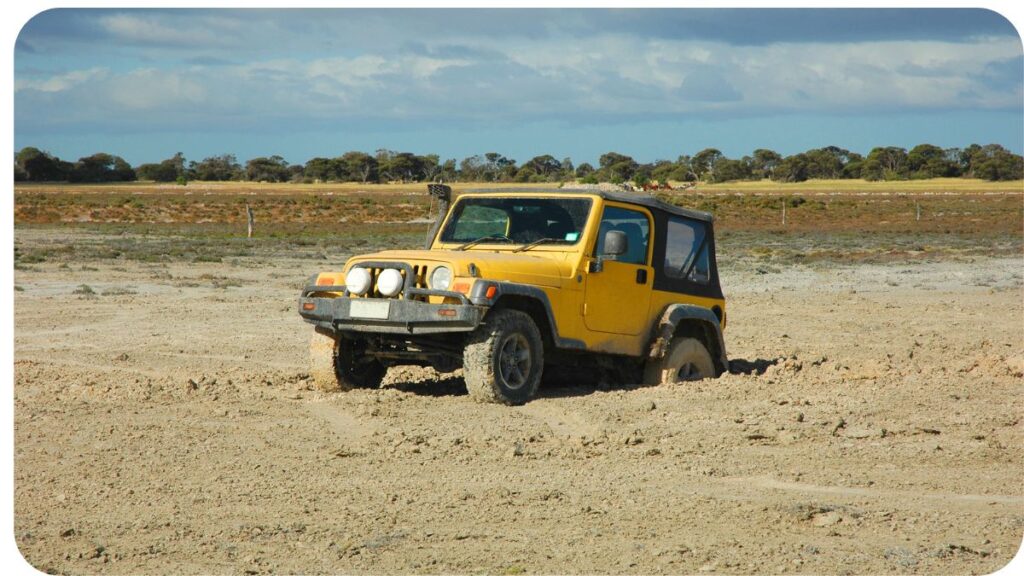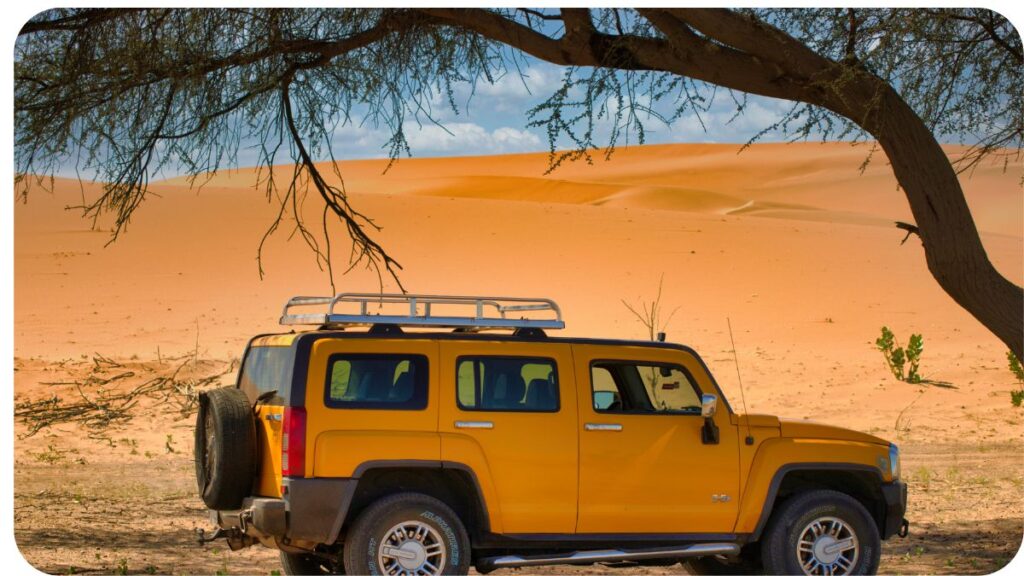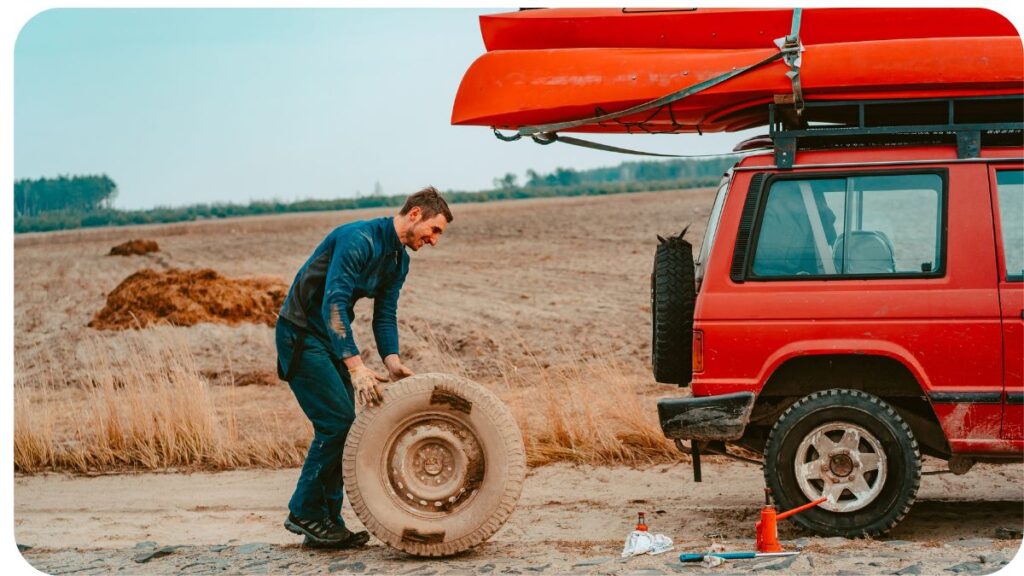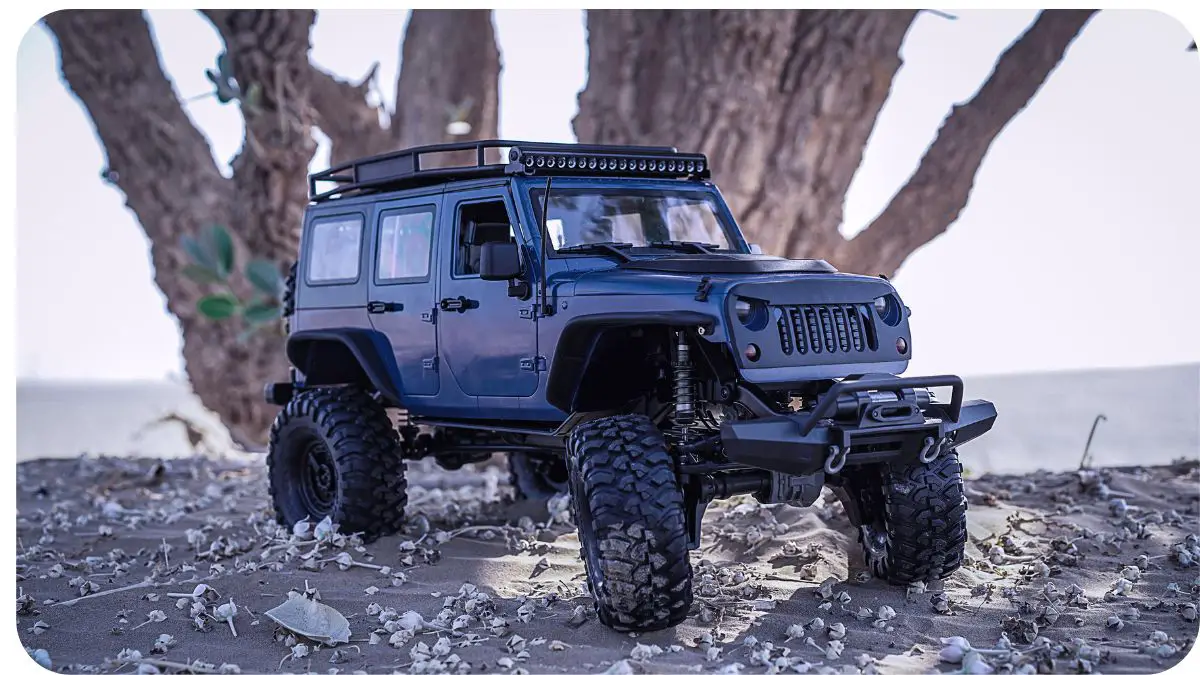Embarking on an overlanding adventure in a 4×4 SUV is a thrilling way to explore the great outdoors. Whether you’re a seasoned overlander or a newbie considering this off-road lifestyle, it’s crucial to weigh the pros and cons before hitting the trails.
In this comprehensive guide, we’ll delve into the advantages and challenges of overlanding in a 4×4 SUV, offering insights, tips, and personal anecdotes to help you make an informed decision.
| Takeaways |
|---|
| 1. Choose the Right 4×4 SUV: Select a vehicle with off-road capabilities and features that suit your overlanding needs. |
| 2. Balance Advantages and Challenges: Be aware of the pros and cons of overlanding in a 4×4 SUV, ensuring a well-rounded understanding. |
| 3. Prepare with Essential Gear: Equip yourself with must-have gear, from recovery straps to navigation tools, for a safe and enjoyable journey. |
| 4. Explore Iconic Routes: Discover breathtaking landscapes by embarking on renowned overlanding routes worldwide. |
| 5. Prioritize Safety and Environmental Responsibility: Follow safety tips, communicate your itinerary, and minimize your impact on the environment for a responsible adventure. |
| 6. Engage with the Overlanding Community: Attend events, share experiences, and connect with fellow overlanders to enhance your journey. |
| 7. Budget Wisely: Allocate funds thoughtfully to cover vehicle expenses, fuel, accommodation, food, and unforeseen costs. |
| 8. Maintain Your 4×4 SUV: Follow a routine maintenance checklist to ensure your vehicle remains reliable throughout your overlanding trips. |
| 9. Learn from Others: Draw insights from personal stories and experiences shared by seasoned overlanders to enrich your own adventure. |
1. What is Overlanding?
Before we dive into the pros and cons, let’s clarify what overlanding entails. Overlanding is a self-reliant, long-distance journey, usually by vehicle, where the emphasis is on the journey itself rather than the destination. It often involves traveling off the beaten path, exploring remote areas, and connecting with nature.
2. Choosing the Right 4×4 SUV

Table: Popular 4×4 SUV Models
| Brand | Model | Off-Road Features | Towing Capacity |
|---|---|---|---|
| Jeep | Wrangler | Trail Rated, 4:1 Rock-Trac | 3,500 lbs |
| Toyota | Land Cruiser | Multi-Terrain Select, Crawl Control | 8,100 lbs |
| Land Rover | Defender | Terrain Response 2, All-Terrain Progress Control | 8,201 lbs |
| Ford | Bronco | G.O.A.T. Modes, Sasquatch Package | 3,500 lbs |
Choosing the right 4×4 SUV is the first step to a successful overlanding experience. Consider factors like off-road capabilities, towing capacity, and available features.
4. Pros of Overlanding in a 4×4 SUV
Table: Advantages of 4×4 SUVs for Overlanding
| Advantage | Details |
|---|---|
| Off-Road Capability | Tackle challenging terrains with ease. |
| Versatility | Explore diverse landscapes and climates. |
| Storage Space | Ample room for camping gear and supplies. |
| Comfort and Amenities | Enjoy a comfortable living space on the road. |
| Towing Capacity | Haul trailers or equipment for an extended journey. |
Overlanding in a 4×4 SUV comes with numerous advantages that enhance your journey and overall experience. From off-road prowess to spacious interiors, these vehicles are built for adventure.
5. Cons of Overlanding in a 4×4 SUV

Table: Challenges of 4×4 SUV Overlanding
| Challenge | Solutions |
|---|---|
| Fuel Efficiency | Plan routes strategically and carry extra fuel. |
| Size and Maneuverability | Adapt to challenging terrains and tight spots. |
| Initial Investment | Budget wisely and consider pre-owned options. |
| Maintenance in Remote Areas | Learn basic vehicle maintenance and carry essential tools. |
While overlanding in a 4×4 SUV offers many benefits, it’s essential to be aware of potential challenges and plan accordingly to overcome them.
Off-Road Essentials
Table: Must-Have Gear for Overlanding
| Gear | Purpose |
|---|---|
| Recovery Straps | Extract the vehicle from mud, sand, or obstacles. |
| Portable Air Compressor | Inflate or deflate tires based on terrain conditions. |
| High-Lift Jack | Lift the vehicle for tire changes or terrain clearance. |
| Navigation Tools | GPS, maps, and compass for accurate route planning. |
| First Aid Kit | Essential medical supplies for emergencies. |
Being well-prepared with the right gear is crucial for a successful overlanding trip. These essentials will ensure you can handle various challenges that may arise.
7. Overlanding Routes and Destinations
Table: Top Overlanding Routes Worldwide
| Route | Description |
|---|---|
| Pan-American Highway | Connects the Americas, offering diverse landscapes. |
| Silk Road | Historical route from Asia to Europe with rich cultures. |
| Canning Stock Route | Australia’s most remote track, crossing vast deserts. |
| Trans-Siberian Highway | The world’s longest road, traversing Russia’s wilderness. |
| Trans-America Trail | Off-road route spanning the U.S. from coast to coast. |
Explore some of the most iconic overlanding routes worldwide, each offering unique landscapes, cultures, and challenges.
8. Safety Considerations
Table: Safety Tips for 4×4 Overlanding
| Safety Tip | Details |
|---|---|
| Check Weather Conditions | Be aware of upcoming weather events and plan accordingly. |
| Communicate and Share Itinerary | Inform someone about your route and expected return date. |
| Carry Emergency Supplies | Water, food, blankets, and other essentials for unforeseen events. |
| Know Your Vehicle’s Limits | Understand your 4×4’s capabilities and drive within its limits. |
Safety should always be a top priority during overlanding. Follow these tips to ensure a secure and enjoyable journey.
9. Environmental Impact
Table: Minimizing Environmental Impact During Overlanding
| Eco-Friendly Practices | Actions |
|---|---|
| Stay on Designated Trails | Avoid damaging vegetation and wildlife habitats. |
| Dispose of Waste Properly | Pack out all trash and follow Leave No Trace principles. |
| Conserve Water | Use water efficiently and minimize waste. |
| Respect Wildlife | Observe animals from a distance and avoid disturbing them. |
Overlanders have a responsibility to minimize their impact on the environment. Adopting eco-friendly practices ensures the preservation of natural spaces.
10. Overlanding Community
Table: Overlanding Events and Gatherings
| Event | Location | Description |
|---|---|---|
| Overland Expo West | Flagstaff, Arizona | The premier overlanding event featuring workshops, exhibits, and camaraderie. |
| Adventure Travel World Summit | Varied locations globally | An international gathering for adventure enthusiasts and overlanders. |
| The Appalachian Rendezvous | West Virginia, USA | A regional event for East Coast overlanders to connect and share experiences. |
| Africa Overland Expo | Multiple locations across Africa | Celebrating overlanding culture and routes on the African continent. |
| Overland Rally | British Columbia, Canada | A Canadian event showcasing the best of overlanding in the region. |
Joining the overlanding community enhances the experience. Attend events and gatherings to learn from others, share stories, and build lasting connections.
11. Budgeting for Overlanding
Table: Overlanding Budget Breakdown
| Expense Category | Percentage of Budget |
| Vehicle Purchase and Upgrades | 40% |
| Fuel | 20% |
| Accommodation | 15% |
| Food | 10% |
| Maintenance and Repairs | 8% |
| Miscellaneous Expenses | 7% |
Budgeting is crucial for a successful overlanding journey. Allocating funds wisely ensures a smooth and enjoyable adventure without financial stress.
12. Maintenance Tips for 4×4 SUVs
Table: Routine Maintenance Checklist
| Maintenance Task | Frequency |
|---|---|
| Oil and Filter Change | Every 5,000 to 7,500 miles |
| Tire Rotation and Inspection | Every 6,000 to 8,000 miles |
| Brake Inspection and Service | Every 25,000 to 30,000 miles |
| Fluid Checks and Top-Ups | Regularly, based on manufacturer recommendations |
| Suspension and Alignment Check | Annually or as needed |
Keeping your 4×4 SUV in top condition is essential for a trouble-free overlanding experience. Regular maintenance ensures reliability on the road.
13. Personal Stories from Overlanders

Table: Lessons Learned from Overlanding Experiences
| Overlander | Lesson Learned |
|---|---|
| Sarah Thompson | Patience is key; unexpected challenges are part of the adventure. |
| Juan Rodriguez | Connecting with locals enriches the cultural experience. |
| Emily and Mark Davis | Overcoming fears opens the door to incredible discoveries. |
| Mike Johnson | Proper preparation prevents problems on the trail. |
Learning from the experiences of fellow overlanders provides valuable insights and helps you navigate challenges more effectively.
Conclusion
Overlanding in a 4×4 SUV offers a unique and exhilarating way to explore the world. From the thrill of conquering challenging terrains to the camaraderie within the overlanding community, this lifestyle is rich with experiences. As we’ve explored in this guide, there are both pros and cons to consider before embarking on an overlanding adventure.
Whether you’re drawn to the freedom of the open road, the beauty of remote landscapes, or the sense of self-sufficiency, overlanding can be a transformative journey. By carefully selecting the right 4×4 SUV, preparing with essential gear, and adopting a responsible approach to the environment, you can make the most of this adventure.
As with any undertaking, overlanding requires thoughtful planning, a willingness to adapt, and a love for the journey itself. The tables provided throughout this guide aim to simplify important information, making it easier for you to prepare for your overlanding expedition.
Remember, each overlander’s journey is unique, and there’s much to learn from shared stories and experiences. The overlanding community is a supportive and diverse group, ready to offer advice, share tips, and celebrate the joys of life on the road.
Further Reading
- JD Power – Overlanding vs. Off-Roading: What’s the Difference?: Explore the nuances between overlanding and off-roading with insights into vehicle choices, terrains, and the overall experience.
- 4WD Talk – Overlanding with a Trailer: Pros and Cons: Delve into the considerations of overlanding with a trailer, weighing the advantages and disadvantages for a more informed journey.
- Trail and Summit – Do You Need 4×4 for Overlanding?: Understand the importance of 4×4 capabilities in overlanding and discover whether it’s a necessity for your off-road adventures.
FAQs
Is overlanding the same as off-roading?
No, they differ in focus. Overlanding emphasizes long-distance journeys with a focus on the journey itself, while off-roading is about navigating challenging terrains for the thrill.
Can I overland with a trailer?
Yes, overlanding with a trailer is a common practice. It offers additional storage space but comes with considerations regarding maneuverability and off-road challenges.
Do I need a 4×4 for overlanding?
Having a 4×4 is beneficial for tackling diverse terrains during overlanding, but it’s not mandatory. The choice depends on the routes you plan to take.
What are the essential items for overlanding?
Key essentials include recovery straps, a portable air compressor, a high-lift jack, navigation tools, and a first aid kit to handle various situations on the road.
How can I minimize my environmental impact during overlanding?
Stay on designated trails, dispose of waste properly, conserve water, and respect wildlife. Adopting eco-friendly practices is crucial for preserving natural environments.

Hi there! I’m Hellen James, and I’m the author of Unified Off-roads. I’ve been driving off-road for more than ten years, and I’ve had a lot of fun in that time—and a few not-so-great experiences too. But I’ve always wanted to help other people get started off-roading, so I decided to start this blog to share my knowledge with others.


